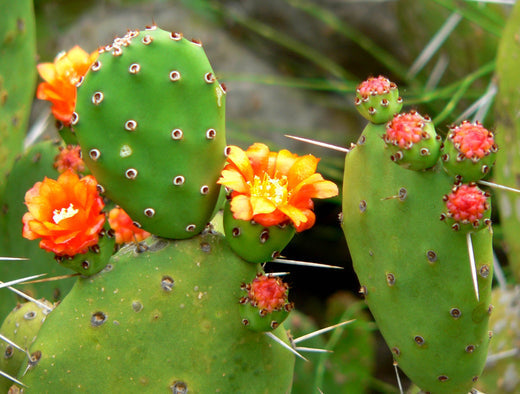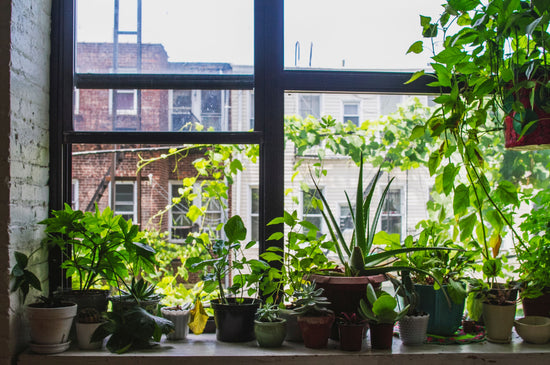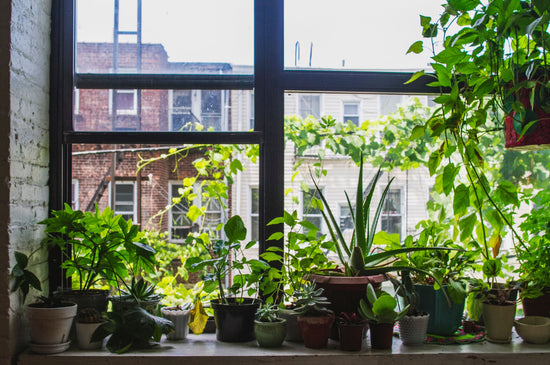Hey there, fellow plant enthusiast! Let’s talk about something magical: cacti in bloom. If you’ve ever wondered when those prickly pals of yours decide to show off their floral flair, you’re in for a treat. Whether you're nurturing a saguaro cactus (Carnegiea gigantea) or a Christmas cactus (Schlumbergera), there’s nothing quite like seeing your cacti burst into vibrant flowers. Grab your gardening gloves, and let’s dive into this prickly yet beautiful world.

The Basics: Why and When Do Cacti Flower?
Cacti bloom as part of their natural reproductive cycle. It’s their way of saying, “I’m thriving!” But here’s the catch: not all cacti bloom on the same schedule. Factors like species, age, and growing conditions all play a role. For instance, a mature prickly pear cactus (Opuntia) might bloom in early summer, while a Christmas cactus (Schlumbergera) will grace you with blooms during the holiday season.
If you’re wondering whether your cactus will flower this year, remember that patience is key. Some species, like the iconic saguaro cactus, take decades before producing their first bloom. But don’t worry; it’s worth the wait!
Seasonal Blooms: What to Expect
Spring and Summer
Most cacti, including the prickly pear cactus and cholla cactus (Cylindropuntia), love to bloom during these warmer months. Their flowers are often bright and eye-catching, attracting pollinators like bees and hummingbirds. If you’re into fruiting cacti, this is also when you’ll start to see fruits forming after pollination.

Fall and Winter
This is the time for holiday favorites like the Christmas cactus and Thanksgiving cactus (Schlumbergera truncata). These indoor champions are triggered by shorter daylight hours and cooler temperatures, making them perfect for adding a splash of color to your holiday décor.
How to Encourage Cactus Blooms
If you’re eager to see your cactus flower, here’s how to set them up for success:
1. Light It Up
Cacti thrive in bright, indirect sunlight. If your sombrero cactus (Coryphantha) or socorro cactus (Pachycereus schottii) isn’t blooming, it might need more light. Move it to a sunnier spot, but avoid harsh, direct sun that can scorch the plant.
2. Perfect the Watering
Overwatering is a cactus’s worst enemy. Let the soil dry out completely between waterings. Think of it like caring for a pencil cactus (Euphorbia tirucalli): less is more.
3. Feed Them Right
A balanced cactus fertilizer during the growing season can work wonders. Just remember to stop fertilizing in the fall to encourage dormancy.
4. Embrace the Chill
For cacti like the Easter cactus (Hatiora), cooler temperatures are essential for triggering blooms. If your cactus can handle it, move it to a cooler spot during its dormant period.
Cacti and Winter Survival
Worried about your cacti surviving the winter? You’ve got this! For hardy outdoor species like the sequoia cactus, protecting them from frost is key. Cover them with frost cloth or move them indoors if possible. Indoor cacti like your Christmas cactus will be just fine as long as you avoid overwatering.
If you’re itching to add more cacti to your collection, check out our cacti collection for a variety of blooming beauties.
FAQ: Your Cactus Questions Answered
Q: How often do cacti bloom?
A: It varies by species. Some, like the Christmas cactus, bloom annually, while others, like the saguaro cactus, take years to bloom.
Q: Can I force my cactus to bloom?
A: You can encourage blooms by providing optimal light, water, and temperature conditions, but nature ultimately decides when it’s time.
Q: What happens if my cactus doesn’t bloom?
A: Don’t stress! It could be due to its age or environmental factors. Keep caring for it, and it may surprise you in the future.
Q: Are cactus flowers fragrant?
A: Some are! For example, night-blooming cacti like the Queen of the Night (Epiphyllum oxypetalum) are known for their lovely scent.
Q: Can I eat the fruits from my cactus?
A: Yes! Prickly pear fruits are not only edible but delicious. Just be sure to remove the spines first.
With a little love and patience, your cacti will reward you with breathtaking blooms. Your indoor garden dreams are just a cactus away!





